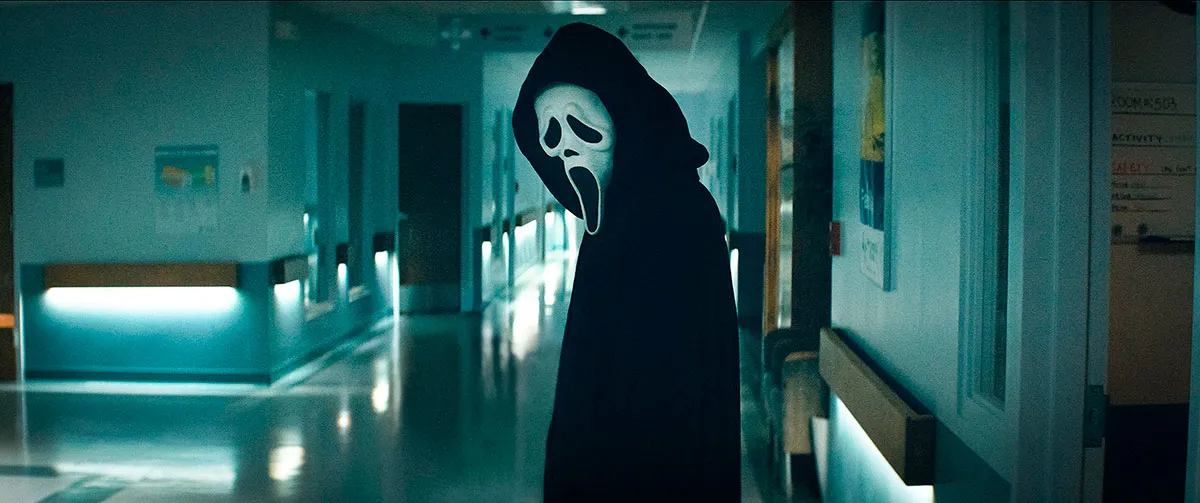Do you like scary movies? Of course you do. That’s why you’re here, reading this article, dressed as Ghostface from Scream, polishing your knives in anticipation of the new movie. But perhaps a more interesting question for Ghostface to have asked 26 years ago is not whether you do like scary movies, but why do you like scary movies? Why are we so drawn towards an experience which make us feel so much fear and revulsion, that is tailor-made to cause us as much distress as possible?
“People who are high in sensation-seeking tend to get pleasure from extreme feelings,” explains Coltan Scrivner, a researcher at the University of Chicago whospecialises in the psychology of morbid curiosity, “and horror movies are one way for them to do that. But also they are only a sub-portion of the people who enjoy horror.”
Most people, according to Scrivner, are ‘white knucklers’, people who are genuinely afraid of horror movies but still enjoy them. “These are the people who feel as if they learn something about themselves through scary experiences,” he says.
“This matches up with data which shows that kids who engage in thrilling or scary play might be at a lower risk for things like anxiety later in life, because they're learning how to navigate negative emotions, high arousal, and learning that they can get through those situations.”
This leads into one of the more popular theories in the field, which is that horror allows us to rehearse scary and dangerous situations in a safe space. “Anxiety and fear are feelings that people tend to avoid in everyday life,” says Scrivner, “so we don't have a lot of practice at it. But experiencing those emotions in a playful way allows you to feel in control. It’s like a flight simulator.”
Some of the dangers and fears that we rehearse in horror have their roots in primal fear. A popular horror film technique, for example, is to mimic dangerous, natural sounds that instinctively signify danger – like The Exorcist, which mixed recordings of angry bees and people screaming.
“There's a lot of studies showing that people are able to, without any experience, pay attention to snakes more than other kinds of dangers,” says Scrivner, who again compares horror to the games we played as children. “A game like tag seems fairly benign,” he says, “but if you think about it, it's really just predator-chase play. It’s the same with hide-and-seek, where you’re essentially hiding from someone out to get you.”
However, sometimes the fears that scary movies tap into are more literal and relevant. Scrivner notes that in if you look at the Google trend map for American searches and type in coronavirus, “you will see a small bump in January 2020 and then a large peak in mid-March”. The peaks correspond with early information about the virus and then the announcement of restrictions a few months later.
“But if you also search for horror movies you’ll see the same trend – a bump in early January, a larger peak in March,” he says. Does this suggest that people were using the safe space of horror to process scary real-life events? “The big example is [pandemic thriller] Contagion becoming super popular in March and April of 2020,” he says. “It showed what a pandemic might look like, but in a safe way.”

But of course, people don’t just watch horror movies for educational purposes. They watch them because they are enjoyable. Scrivner suggests that this has a lot to do with our sympathetic and parasympathetic nervous systems, which regulate bodily functions such as heart rate and arousal.
“Think of them like two gas pedals,” he explains. “When you're getting ramped up and anxious, your sympathetic nervous system increases things like heart rate and adrenaline output. And then once you overcome a dangerous situation, the sympathetic nervous system calms down just a little bit and parasympathetic ramps up.
"The parasympathetic is more of your rest and relaxation. It increases digestion. It releases those feel-good hormones; basically, the same things that drugs do to make you feel good.”
So, by simulating the experience of overcoming something dangerous – like surviving a jump-scare or finishing a horror movie –you can essentially trick the parasympathetic nervous system into spiking and giving you a rush of pleasure and relief. Who needs rollercoasters when you have a knife emerging from the dark?
About our expert, Coltan Scrivner
Coltan is a PhD candidate at The University of Chicago in the Department of Comparative Human Development and a Fellow at the Institute for Mind and Biology. He studies what draws us into monsters, murderers, and the macabre, and he is writing a book on morbid curiosity, to be published by Penguin Random House in 2023.
Read more fromPopcorn Science:
Looking for more psychology reads? Check out our roundup of the best psychology books to help you better understand yourself and your potential.